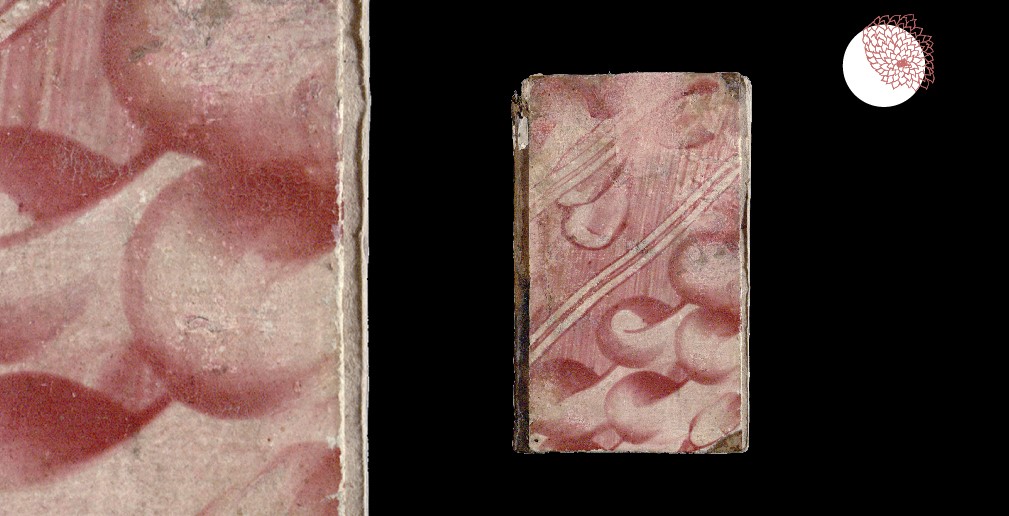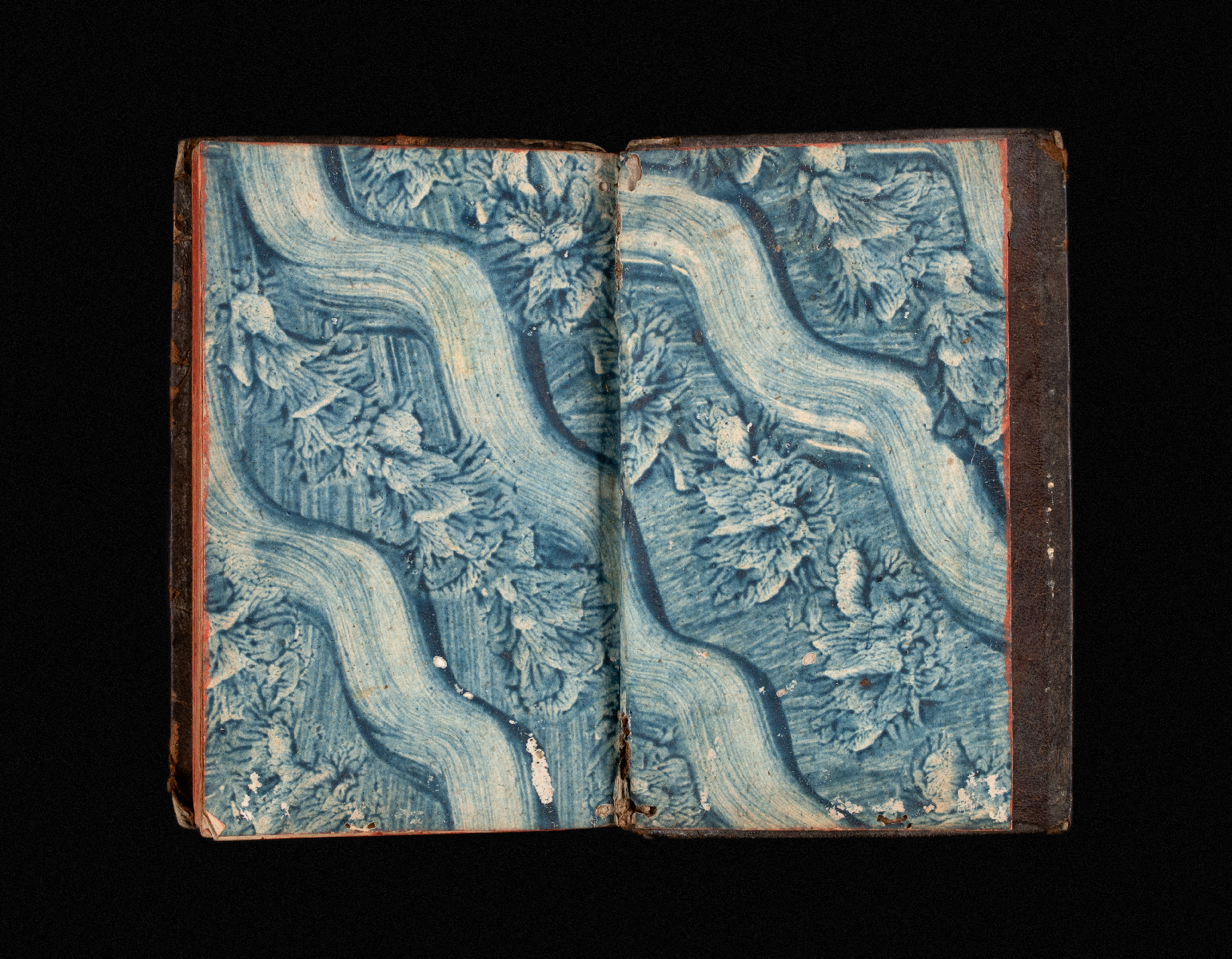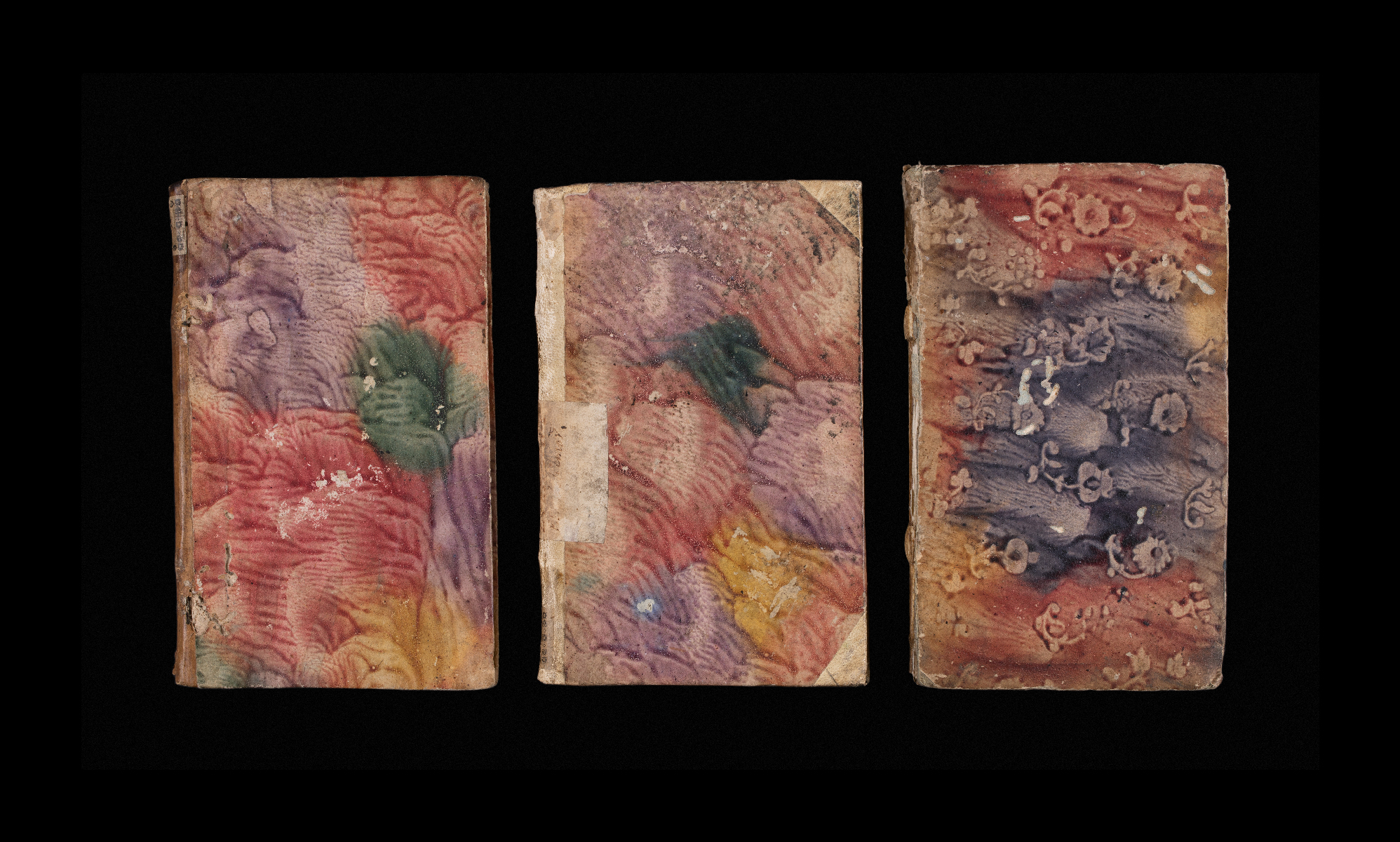
A new week – a new story from the virtual exhibition “Tales of Decorated Paper”! Today we invite you to explore paste paper – at first sight not-so-sophisticated technique that helps to create relatively modest patterns while employing the simplest materials at hand. As you look around the exhibition, you will come to understand that paper decorated with the help of this simple technique, however, is far from plain or unremarkable.
So, what is the paste? It can be made even in an ordinary kitchen – one only needs flour, water and some pigment or dye; this makes a coloured paste. It is thought that this technique is one of the earliest methods to prepare colour, invented while striving to find a way to imitate luxurious fabric, leather, or marbled paper. Paste paper was perfected in Germany in the 18th century and from there it successfully spread to workshop of other countries.
Flour or starch paste is a material for pasting used in various crafts since old times. A recipe of glue can even be found in Laurynas Ivinskis’ Calendar (published in 1847 in Vilnius).
Paste paper patterns are surprisingly unique; they are created with a variety of tools and this results in many inventive solutions. One of the simplest patterns of paste paper is a sheet covered with paint and folded in half, which, when opened, has a symmetrical ornament of veins. Another minimalist solution is a pattern created by strokes of a wider brush on paper covered with paste. More elaborate patterns were created by wiping through wet and coloured paste with various, often homemade, tools such as combs, sticks, crumpled paper or fabric, a sponge, etc.

Often recurring colour combination that is characteristic to many historical examples of paste paper is rhythmically arranged red, purple, green and yellow. In some cases, decorators would combine several decoration techniques – for example, woodcut printing was also used to decorate sheets covered with paste.
Quite often the same technique was applied for the decoration of book edges: before putting on the cover, edges of the text-block would firstly be trimmed and polished; then the block would be firmly compressed in a press, covered with paint, and decorated in a desired pattern.
White studying paste paper, viewers of exhibition will get to know some unexpected fun facts – books decorated with paste paper had to be protected against some species of insects. Why? The rest of this story can be found looking through A soft footprint. Paste paper – the 4th part of the digital exhibition Tales of Decorated Paper. The exhibition is hosted on Google Arts and Culture and can be accessed by clicking on this link.

Other stories:
A Pacing Woodblock. Block-printed Paper – Available here
A Swarm, Landed. Sprinkled Paper – Available here
A Ripple, Captured. Marbled Paper –Available here
A Golden Garden. Brocade Paper – on 12 October
2021-10-05
